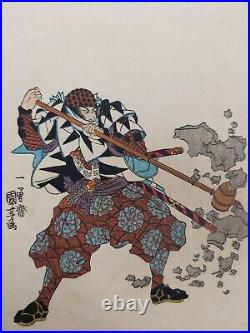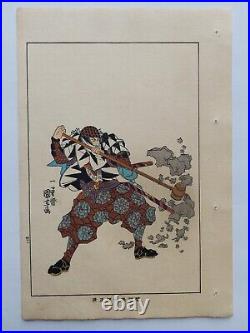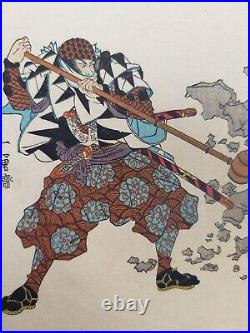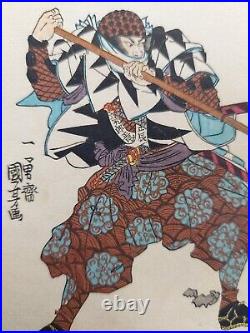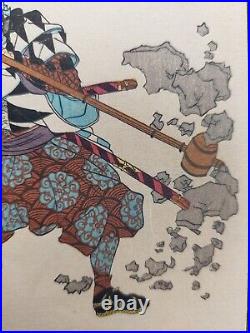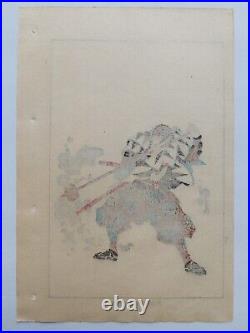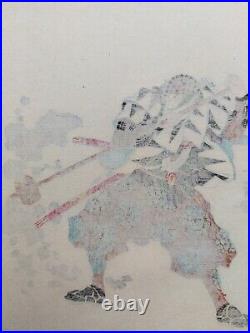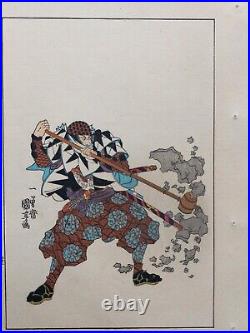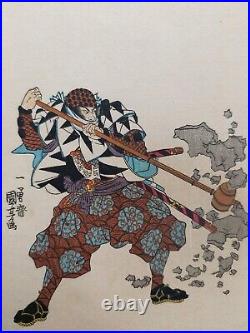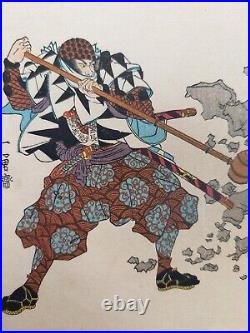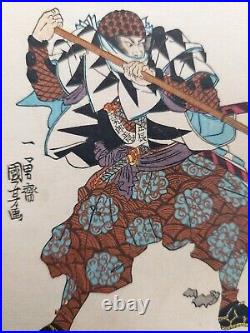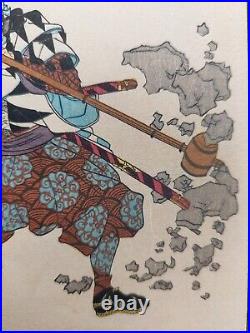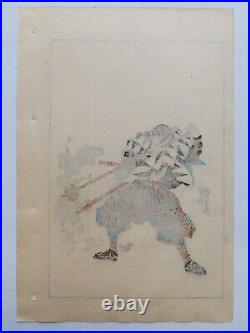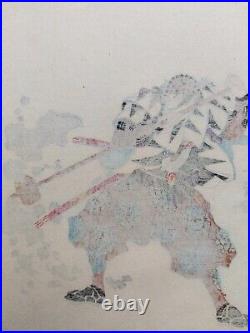ARTIST: TSUKIOKA KOGYO (1869 – 1927). (the adopted son and student of the greatest UKIYO-E master of the Meiji era: YOSHITOSHI, hence the name). He also studied with Ogata Gekko. The influence of both artists is seen in his work. AGE: APPROX 100 years old. MEDIUM: WOODBLOCK PRINT (INK ON PAPER) NISHIKI-E. SIZE: 14 inches by 10 inches (38 cm X 25 cm). GENRE: THEATER PRINTS OR PICTURES. SERIES: A GREAT COLLECTION OF NOH THEATER IMAGES. SUBJECT: ACTORS, COSTUMES, NOH THEATER. CONDITION: very good, minor imperfections (see detailed pictures). DESCRIPTION: deluxe printing techniques, metallic pigments, and woodgrain on the background were used in the making of many of the prints in this series. COMMENTS: BEAUTIFUL COLORS, GREAT IMPRESSION, ELEGANT, AND SUBLIME. PERFECT FOR DISPLAYING FRAMED.
Archive for March 27th, 2025
JAPANESE WOODBLOCK PRINT SHIN HANGA ORIGINAL ANTIQUE TSUKIOKA KOGYO 1927 Signed
Author: adminMar 27
JAPANESE WOODBLOCK PRINT SHIN HANGA ORIGINAL ANTIQUE TSUKIOKA KOGYO 1927 Signed
Author: adminMar 27
ARTIST: TSUKIOKA KOGYO (1869 – 1927). (the adopted son and student of the greatest UKIYO-E master of the Meiji era: YOSHITOSHI, hence the name). He also studied with Ogata Gekko. The influence of both artists is seen in his work. AGE: APPROX 100 years old. MEDIUM: WOODBLOCK PRINT (INK ON PAPER) NISHIKI-E. SIZE: 14 inches by 10 inches (38 cm X 25 cm). GENRE: THEATER PRINTS OR PICTURES. SERIES: A GREAT COLLECTION OF NOH THEATER IMAGES. SUBJECT: ACTORS, COSTUMES, NOH THEATER. CONDITION: very good, minor imperfections (see detailed pictures). DESCRIPTION: deluxe printing techniques, metallic pigments, and woodgrain on the background were used in the making of many of the prints in this series. COMMENTS: BEAUTIFUL COLORS, GREAT IMPRESSION, ELEGANT, AND SUBLIME. PERFECT FOR DISPLAYING FRAMED.
Japanese Woodblock Print Samurai Warrior
Author: adminMar 27
ARTIST: UTAGAWA KUNIYOSHI (1797 – 1861). SERIES: BIOGRAPHIES OF THE LOYAL RETAINERS (THE 47 RONIN). NISHIKI-E (INK ON PAPER). SIZE: 9.5 INCHES X 6.5 INCHES. (24 CM X 16.5 CM). AGE: 108 YEARS OLD. UKIYO-E PICTURES OF THE FLOATING WORLD. GENRE: MUSHA-E (PICTURES OF SAMURAI / WARRIORS / RONIN). MATERIAL: WASHI HANDMADE PAPER. COMMENTS: HANDMADE WOODBLOCK PRINT OR WOODCUT DONE BY HAND THE OLD WAY (Not a poster, not a lithograph and not done with any other modern printing technique). A ronin was a samurai in feudal Japan who was without a master. The term literally translates to “wandering man” or “drifter”. Ronin were samurai who lost their master’s favor or legal privilege, or whose master died. They often became mercenaries or bodyguards, but also turned to gambling and extortion. The term ronin comes from the Japanese words ro (wave) and nin (man or person). The story of the 47 ronin is a famous samurai tale based on true events in 1703.















